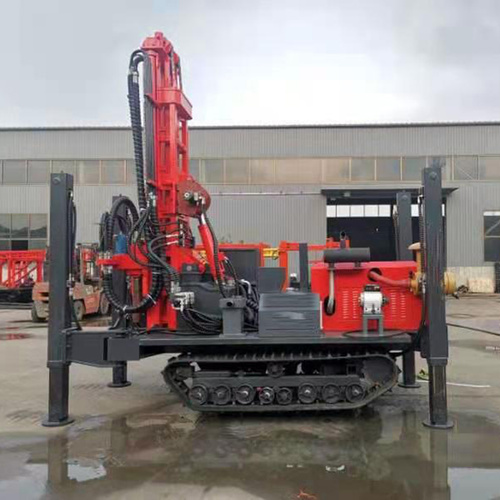Drilling parameters for the FS-180 crawler water well drilling rig
This FS-180 crawler water well Drilling Rig is a real workhorse. It's super efficient and reliable, which is why it's used for all sorts of stuff like digging water wells, geothermal exploration, and checking out what's under the ground. But, to get the most out of it, you have gotta know how to set the right drilling parameters. So, let's break it down:

1. How Fast You Dril:
This is how deep the drill goes in the ground in an hour, usually measured in meters per hour.
A bunch of things affect it, like how hard the ground is, what kind of drill bit you are using, how much pressure you are putting on it, how fast it's spinning, and how much fluid you are pumping down there.
If you are drilling through soft ground, you can go faster to get the job done quicker.
But, if you are drilling through hard ground, you need to slow down to keep the drill bit and the rig from getting wrecked.
2. How Much Weight You Put on the Drill:
This is how much force you are pushing down on the drill bit, usually measured in kilonewtons.
It really affects how well the drill bit cuts and how fast you drill.
If you don't push hard enough, the drill bit won't cut well, and you'll go real slow.
But, if you push too hard, you'll wear out the drill bit real fast, and maybe even break it or the rig.
You have gotta pick the right pressure for the type of ground and drill bit you are using.
3. How Fast the Drill Spins:
This is how many times the drill bit spins in a minute, usually measured in revolutions per minute.
It affects how fast the drill bit cuts and how fast you drill.
If it spins too fast, you'll wear out the drill bit real fast, and maybe even break it.
If it spins too slow, the drill bit won't cut well, and you'll go real slow.
You've gotta pick the right speed for the type of ground and drill bit you are using.
4. How Much Fluid You Pump Down There:
This is how much fluid you're pumping down the hole in a minute, usually measured in liters per minute.
The fluid's job is to get rid of the rock bits, cool down the drill bit, and keep the sides of the hole from collapsing.
If you don't pump enough fluid, the rock bits will pile up and slow you down.
If you pump too much, you'll wash away the sides of the hole and mess it up.
You've gotta pick the right flow for the type of ground and how big the hole is.
5. Other Stuff to Think About:
How Much the Drill Pipe Twists:
This is how much twisting force the drill pipe can handle, and it tells you how much resistance you are getting while drilling.
How Much Pressure the Fluid Has:
This is how much pressure the fluid has in the hole, and it tells you how well it's getting rid of the rock bits.
Which Way the Hole's Going:
If you're drilling a hole that's going sideways or at an angle, you have gotta keep a real close eye on this to make sure you are going where you are supposed to.
6. Changing the Settings:
You can't just set the drilling parameters and forget about them. You have gotta change them as the ground changes and as you drill.
While you are drilling, keep an eye on things like the pressure, speed, and fluid flow.
If you see anything weird, change the settings right away to keep things safe and efficient.
7. Things to Keep in Mind:
When you are changing the settings, follow the instructions from the people who made the rig and any other rules you are supposed to follow.
Think about all the different things that affect drilling and pick the right settings for the job.
And, of course, always be safe and don't do anything that could cause an accident.
Click The Link Below to Contact Us Today, And We Will Find The Perfect Drilling Solution For You!
FS-180 crawler water well drilling rig-Pearldrill
